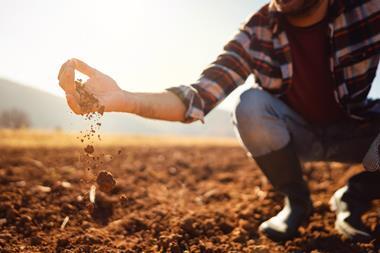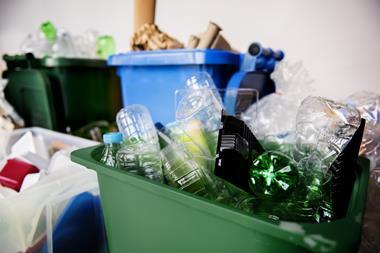New techniques can lower ‘plane crazy’ CO2 emissions from rice
Rice has a ‘dirty little secret’: it produces 10% of the world’s methane emissions. That’s more CO2 than 1,200 coal-fuelled power stations, than all the planes in the sky. It sits behind only beef as the food with the worst environmental impact.
But the secret is out: a big reveal was pasted across London’s billboards by sustainable rice business Nice Rice last month, in an ad brief ad campaign to spread the word about the devastating environmental impact of one of the world’s most widely consumed foods.
“There’s very low awareness but rice has a huge emission footprint,” says Fergus O’Sullivan, who founded the challenger brand in May 2023. “And it’s annoying for people to hear , because they’re like ‘oh not another one’, but ultimately, we want to raise awareness and offer people a solution.”
It’s a solution that won Nice Rice the inaugural Future of Food competition in London last week, with a promise to champion more sustainable rice farming. So how does it work?
The issue with rice is primarily due to the way it is grown. The crop is typically farmed in flooded fields to help minimise weeds, but the water also creates ideal conditions for bacteria to decompose organic matter, which releases huge amounts of methane as a result.
So the opportunity for change is immense, and luckily, there’s a solution raring to go. Nice Rice sources basmati rice exclusively from Indian farmers using the System of Rice Intensification (SRI) methodology, a range of practices Nice Rice claims cuts emissions by 49% versus traditionally grown crops.
The most impactful technique is known as alternate wetting and drying (AWD), a method endorsed by the UN that involves drying out rice paddies for brief periods throughout the season, reducing emissions.

If sustainable practices like this were adopted more widely, the Intergovernmental Panel on Climate Change estimates 0.2 gigatonnes of CO2 equivalent could be cut each year by 2030, the equivalent of the US’s necessary reductions to achieve net zero.
To help more farmers transition, Nice Rice pays a premium of around 1,000 rupees per tonne on top of a current market rate of around 40,000 rupees. “There isn’t really a market for sustainably farmed rice so a lot of farmers sell it at normal market prices,” says O’Sullivan. “There needs to be more of an incentive to get more farmers to take the risk to change.”
Read more:
Nice Rice wins inaugural Future of Food award
Tilda boosts annual rice yields of north Indian farmers by 7%
Rice, pulses & noodles trends 2024: Oodles of noodles
The practices, though, can also reduce the cost of production by 10%-30% while simultaneously boosting yields by up to 50%, says Norman Uphoff, a professor emeritus in Cornell University’s department of global development.
“SRI methods should be their own reward but since farmers are producing positive externalities such as reduced water consumption, improved soil health, better-tasting rice, [and] more nutritious rice, farmers deserve a high price for their high-quality product,” he says.
Big brands are now recognising the need to change. Ben’s Original owner Mars says rice accounts for 66% of its unsustainable water usage and 4% of its agricultural greenhouse gas emissions. Tilda says it now sources from 1,270 farmers using AWD, representing 30% of its needs.

Adoption problems
There are problems, though. The first issue is that SRI was developed for smallholder farmers whereas large commercial producers are cultivating sometimes thousands of hectares, seeded by planes.
And second SRI does not have a certification scheme as it is designed to be adapted by farmers to local conditions. This means that in many cases, brands could be over-stating their positive impact. “So far it has been mostly large companies that have embraced the standards, and production practices are what I call conventional light,” says Olivia Vent, SRI liaison at US sustainable rice seller Lotus Foods.
Uphoff estimates that while there are 20-30 million farmers on about 10 million hectares using SRI methods, less than 25% of them use the recommended methods properly.
Ultimately, if rice is to be more sustainable there will have to be a market for it. In the UK, Nice Rice is still relatively expensive, about £1.85 for a 250g pouch in Waitrose versus £1.65 for an equivalent Tilda product.
O’Sullivan recognises most shoppers will not pay extra for environmental credentials so Nice Rice is intent on delivering on taste. He points to several awards it’s won, including two Great Taste awards and a New Product & Packaging Award in 2023.
“I don’t believe we’ll grow a successful brand by banging on about sustainability all the time,” he says. “We’ll have a successful brand if we’ve got the best product on the shelf and it’s good value for money. That is our real focus.”




















No comments yet